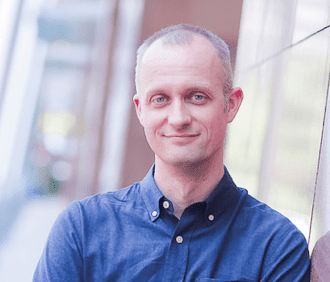Can being tossed out of school increase a kid’s chances of getting an education? It depends on where they land—if it’s in the right facility, the answer might be yes.
Alternative learning centers (ALCs) are off-site educational facilities designed to offer at-risk public school students a more hands-on environment. They’ve been around a long time, first appearing in the 1960s as places for kids who had trouble learning. Over the years, they increasingly became spaces where students with disciplinary problems were sent to be “warehoused.” Since then, they’ve had their share of troubles. School administrators have sometimes used them to simply offload tough cases, and the worst of them have been described as “basically jail.”
Now, some educators are working to recapture the original intent of ALCs, so students grappling with disciplinary, psychological or social problems get a learning environment designed for their needs.
“We’re trying to change the perception of what an alternative school is,” Michelle Ruckdeschel, principal of Heritage Park High School in Owensboro, Kentucky, told Kentucky Teacher magazine. “We’re not a school for bad kids. This is a school that reaches kids where they are and meets their needs in a different way.”
Heritage Park is among the new class of alternative learning centers. It opened in August 2015 to replace a previous ALC that was mainly geared toward hustling students across the finish line. Instead of simple credit-recovery, Heritage Park focuses on providing an educational experience that emphasizes socialization, practical skills and forging human connections.
One way it does this is by involving students in the community. Kids work with residents of homeless shelters and senior centers to learn what it’s like to be the one helping, rather than always being on the receiving end of assistance. Projects like student-created publications are prioritized over exams. And job-shadowing programs get students out of the classroom and into the world.
In just four years, Heritage Park has earned accolades for its success in improving students’ grades and ACT scores. Some of its seniors are even beginning to take college courses for dual credit. Students at the school report being less anxious and better able to focus. “We are seeing more of our students entering jobs that can become sustainable careers,” said Ruckdeschel.
The key to success appears to be the school’s embrace of the fact that these students are different. Some ALC students have behavioral issues, others might be addicted to drugs and still others might be pregnant or homeless. Some are on long-term suspensions, or returning to school after dropping out. The new ALCs don’t turn their backs on these realities—instead, they face them and accommodate for them. Alternative learning centers offering parenting classes, drug recovery programs, psychiatric services, even neonatal care. Informal dynamics and minimal bureaucracy are often hallmarks.
They can even have the flexibility to give students more time to graduate if need be. A landmark study of alternative learning centers in Minnesota found that the graduation rate of ALC students was 39 percent in a normal four-year time frame—not too shabby, since educators believe many of these students would not have graduated at all if enrolled in a traditional school.
But the study found something else: when given an additional three years to graduate, as the ALCs allowed them, the graduation rate leapt to 62 percent. Less rigidity in the ALC structure led to better outcomes. Almost three-quarters of students surveyed by the study reported that their ALC had met or exceeded their expectations—and some of these are kids who already got kicked out of school!
The alternative learning center model is scaling up. The Center on Reinventing Public Education reports that the number of students enrolled in ALCs has increased dramatically in the last few years—today, there are 4,000 alternative learning facilities in the U.S.
But perhaps the more significant scale-up effect is that traditional schools are increasingly adopting the traits that ALCs have championed. “Many of the reforms currently pursued in traditional schools—downsizing the high school, pursuing a focus or theme, student and teacher choice, making the school a community, empowering staff, active learner engagement, authentic assessment—are practices that alternative schools pioneered,” concludes an article in the journal Educational Leadership. “Amid all the current talk of school restructuring, alternatives are the clearest example we have of what a restructured school might look like.”
The biggest hurdle ALCs may face is stigma. Even today, special education of any kind suffers from unfair preconceptions. And perhaps inevitably, the bad apples get the most press. But as one assistant principal of a Brooklyn alternative learning center told United Federation of Teachers magazine, they’re “the best-kept secret” of the school system. “I tell some students,” he added, “this may be the best worst mistake you ever made.”
This story is part of a collection called Education against the Odds: Stories of teaching and learning in difficult circumstances. Read more here.









